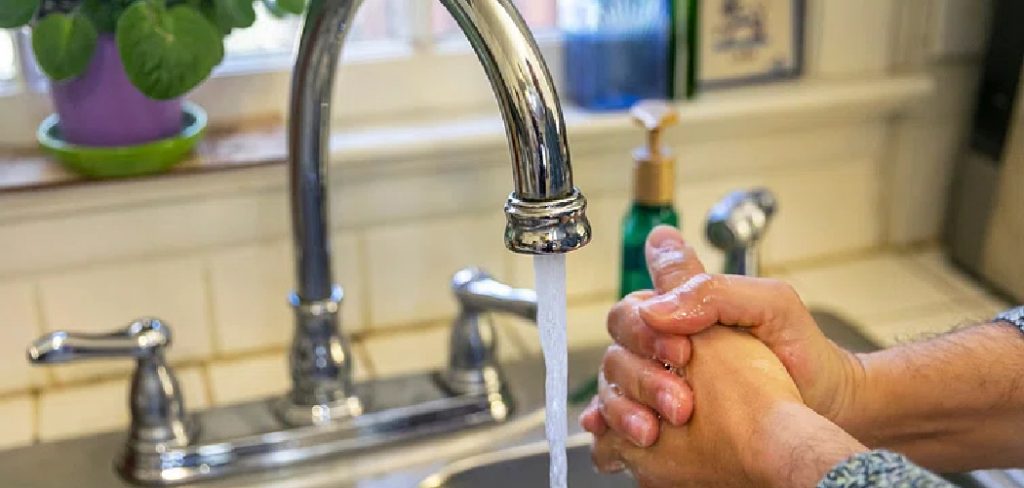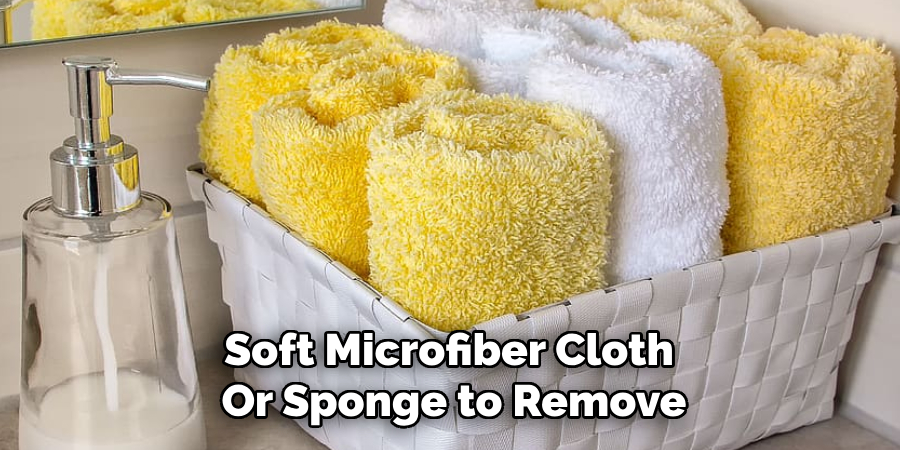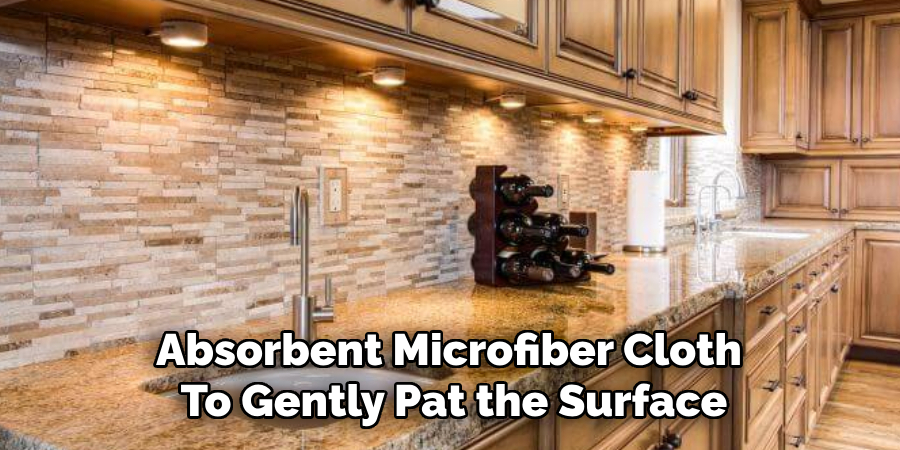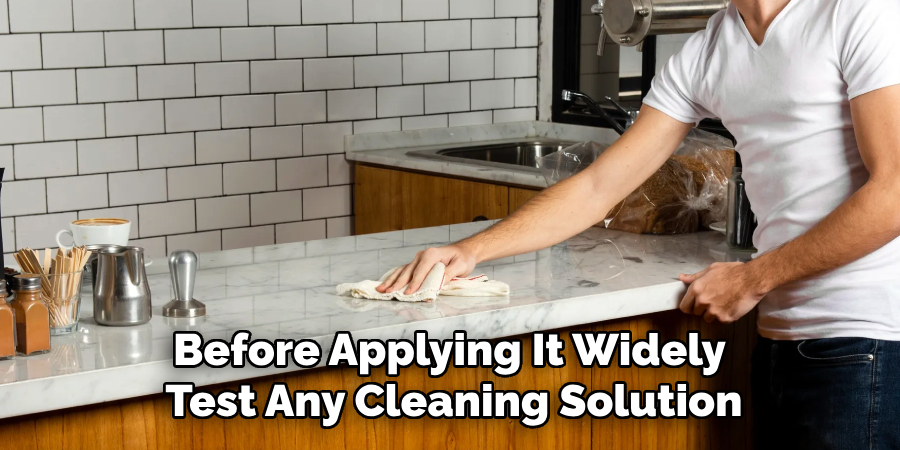Are you looking for ways to learn how to disinfect your marble countertops? Don’t worry, we’ve got you covered! Marble countertops are a beautiful addition to any kitchen or bathroom, but they can also be prone to staining and damage if not properly disinfected.

Maintaining the beauty and cleanliness of marble countertops is essential to preserving their luxurious appearance and durability. However, marble is a porous and delicate material that requires special care to avoid damage during cleaning. Disinfecting marble countertops removes harmful bacteria and germs and ensures the surface remains safe and hygienic for daily use.
By using the right techniques and cleaning solutions, you can effectively disinfect your marble countertops without compromising their elegance or longevity. Let dive into how to disinfect marble countertops.
What are the Benefits of Disinfecting Marble Countertops?
Before delving into the methods for disinfecting marble countertops, it’s essential to understand why it is crucial. Here are some of the benefits of regularly disinfecting your marble countertops:
- Removes Harmful Bacteria and Germs: Kitchen and bathroom countertops are often exposed to bacteria, making them a hotspot for germ buildup. You can remove these harmful microorganisms and reduce the risk of illness by disinfecting your marble countertops.
- Preserves the Quality and Appearance of Your Marble: Using harsh cleaning products or incorrect techniques can cause damage to your marble countertops, leading to discoloration or etching. Regularly disinfecting your countertops helps maintain their quality and prevent any damage.
- Ensures a Safe and Hygienic Surface: As marble countertops are often in contact with food and other items, keeping them clean and free of bacteria is essential. By disinfecting regularly, you can ensure your surfaces are safe for food preparation and daily use.
What Will You Need?
To properly disinfect your marble countertops, you will need the following supplies:
- Mild dish soap or neutral pH cleaner
- Warm water
- Soft microfiber cloth or sponge
- Isopropyl alcohol (70% concentration)
- Spray bottle
Once you have gathered these supplies, you’re ready to begin the disinfection process.
9 Easy Steps on How to Disinfect Marble Countertops
Step 1. Remove Debris and Wipe the Surface:

Start by clearing your marble countertops of any items such as utensils, dishes, or decor. Once the surface is clear, use a soft microfiber cloth or sponge to remove any loose debris, crumbs, or dust gently. Be sure to avoid using abrasive materials, which can scratch the marble’s surface. If there are tougher residues, use warm water and a small amount of mild dish soap to help loosen and remove them carefully. This step ensures a clean base for effective disinfection and helps prevent any particles from being spread during the disinfection process.
Step 2. Prepare a Cleaning Solution:
Fill a spray bottle with warm water and a few drops of mild dish soap or a neutral pH cleaner. Gently shake the bottle to combine the ingredients without creating too many bubbles. This solution will help cleanse and prepare the marble surface for proper disinfection. Make sure not to use acidic cleaners such as vinegar or lemon juice, as they can damage the marble’s finish.
Step 3. Wipe the Surface:
Spray the cleaning solution evenly across the marble surface, ensuring complete coverage. Using a soft microfiber cloth or sponge, gently wipe the surface in a circular motion to remove dirt and any residue. Be thorough but gentle to preserve the marble’s finish. Rinse the cloth or sponge with clean water regularly during the process to prevent reapplying dirt. After wiping, use a clean, damp cloth to remove any leftover soap residue, which can leave streaks or dull the surface.
Step 4. Dry and Buff the Surface:

Once the marble surface has been thoroughly cleaned and rinsed, it is crucial to dry it immediately to prevent water spots or streaks from forming. Use a soft, absorbent microfiber cloth to gently pat the surface dry, ensuring no water is left behind. Once dry, use a separate clean cloth to buff the surface gently in circular motions. This will help restore the marble’s natural shine and remove any remaining residue.
Step 5. Seal the Marble Surface:
Sealing marble is essential to protect it from stains and moisture. Choose a high-quality marble sealer designed for your specific type of marble. Follow the manufacturer’s instructions for application, which typically involves evenly applying the sealer with a soft cloth or applicator. Allow the sealer to penetrate the marble for the recommended amount of time, then wipe away any excess with a clean cloth. Repeat this process as needed, usually every 6 to 12 months, to maintain the marble’s durability and ensure its pristine appearance over the years.
Step 6. Regular Maintenance and Cleaning:
Establish a routine for regular maintenance and cleaning to keep your marble looking its best. Wipe up spills immediately to prevent potential staining, especially from acidic substances like lemon juice or wine. Clean the marble surface weekly with a gentle, pH-neutral cleaner and a soft cloth. Avoid using abrasive materials or harsh chemicals, which can damage the marble’s surface or diminish its polish. By adhering to a consistent maintenance routine, you can preserve the beauty and longevity of your marble for years.
Step 7. Addressing Stains and Damage:

Despite regular care, marble surfaces may sometimes develop stains or minor damage. Identify the substance responsible for stains and use an appropriate cleaning method, such as a baking soda poultice for oil-based stains or hydrogen peroxide for organic stains. Before applying it widely, test any cleaning solution on a small, inconspicuous area. Consider consulting a professional marble restoration specialist to repolish and restore the surface if scratches or etches occur. Promptly addressing issues ensures that your marble retains its elegance and functionality over time.
Step 8. Preventative Measures:
Taking preventative measures is crucial in maintaining the pristine condition of your marble surfaces. Always use coasters under glasses to avoid water rings and acid damage from beverages. Place protective pads under furniture to prevent scratches and avoid dragging heavy items across the surface. Utilize rugs or mats in high-traffic areas to minimize wear. Regularly sealing your marble, as the manufacturer recommends, can also create an additional layer of protection against stains and moisture.
Step 9. Regular Maintenance Tips:

Consistent upkeep is key to preserving the beauty and longevity of marble surfaces. Dust or wipe the surface daily with a soft, dry cloth to remove particles that could cause scratches. Use a pH-neutral cleaner to clean the marble weekly, ensuring it does not strip away the sealant or damage the stone. Avoid abrasive scrubbers or harsh chemicals, which can weaken or dull the surface. Establishing a routine for maintenance will help your marble retain its timeless appeal for years to come.
By following these simple steps, you can effectively disinfect and maintain your marble countertops to keep them looking beautiful and pristine for years.
5 Things You Should Avoid
- Using Acidic Cleaners: Avoid using acidic cleaners such as vinegar, lemon juice, or anything containing citric acid. These substances can etch the marble’s surface, causing dull spots or permanent damage.
- Scrubbing with Abrasive Tools: Never use rough sponges, steel wool, or brushes with hard bristles on marble countertops. Abrasive tools can scratch the delicate surface, ruining its polished appearance.
- Ignoring Spills: Spills, especially from substances like wine, coffee, or oil, should be cleaned up immediately. Allowing them to sit can lead to difficulty, if not impossible, in removing staining.
- Using Bleach or Ammonia: Harsh chemicals like bleach, ammonia, or products containing these ingredients can degrade the sealant on marble and may cause discoloration or weakening of the material.
- Skipping Sealing Maintenance: Failing to reseal your marble countertops regularly leaves them more vulnerable to stains and moisture damage. Always ensure the sealant is properly maintained to protect the surface.
By avoiding these common mistakes, you can keep your marble surfaces looking stunning and extend their lifespan.
What are the Causes of Damages to Marble Surfaces?
- Spills and Stains: As mentioned, spills not promptly cleaned up can cause permanent staining on marble surfaces.
- Scratches and Etches: Sharp objects or abrasive materials can scratch the surface of marble, while acidic substances can cause etching or dull spots.
- Lack of Sealing Maintenance: Marble is more susceptible to moisture damage and staining without regular sealing.
- Harsh Cleaning Products: Using harsh chemicals or abrasive tools on marble can lead to damage over time.
- General Wear and Tear: Regular use and traffic can also contribute to wear on marble surfaces, especially in high-traffic areas.
With proper care and preventative measures, you can minimize damage to your marble surfaces and ensure they retain their stunning appearance for years.
Conclusion
To properly disinfect marble countertops, always prioritize using gentle, pH-neutral cleaners that are safe for natural stone. Avoid harsh chemicals or abrasive materials that can damage the surface.
A simple solution of warm water and mild dish soap can effectively clean and disinfect without harming the marble. After cleaning, dry the surface with a soft, lint-free cloth to prevent water spots. Regular maintenance, including resealing the marble periodically, will enhance its durability and ensure it remains sanitary and visually appealing.
By following these steps on how to disinfect marble countertops, you can keep your marble countertops both clean and protected against damage.
Professional Focus
Angela Ervin, a former interior designer turned blogger, specializes in kitchen design and renovations. Through her website, she blends her passion for cooking with design expertise, sharing practical and creative ideas. Known for balancing functionality and beauty, Angela’s insightful content has made her a trusted voice in home design and lifestyle.
About the Author
Angela Ervin, an experienced interior designer and blogger, combines her passion for kitchen renovations with storytelling. Living in Petersburg with her family, she enjoys cooking and testing her projects firsthand. Known for her humor and relatable style, Angela shares creative, functional design insights through her content, making her a trusted voice in home design.
Education History
University: Virginia Commonwealth University
Degree: Bachelor of Fine Arts (BFA) in Interior Design
- Angela’s education at VCU focused on mastering core interior design principles, including spatial planning, color theory, materials selection, and sustainable design practices.
- She gained hands-on experience through studio projects and collaborative design exercises, which honed her ability to create functional and aesthetically pleasing environments.
- Her coursework also emphasized problem-solving and practical applications of design, preparing her for real-world projects like her self-directed kitchen renovations.
- The program’s strong foundation in both technical skills and creative expression shaped Angela’s ability to seamlessly integrate form and function in her work.
